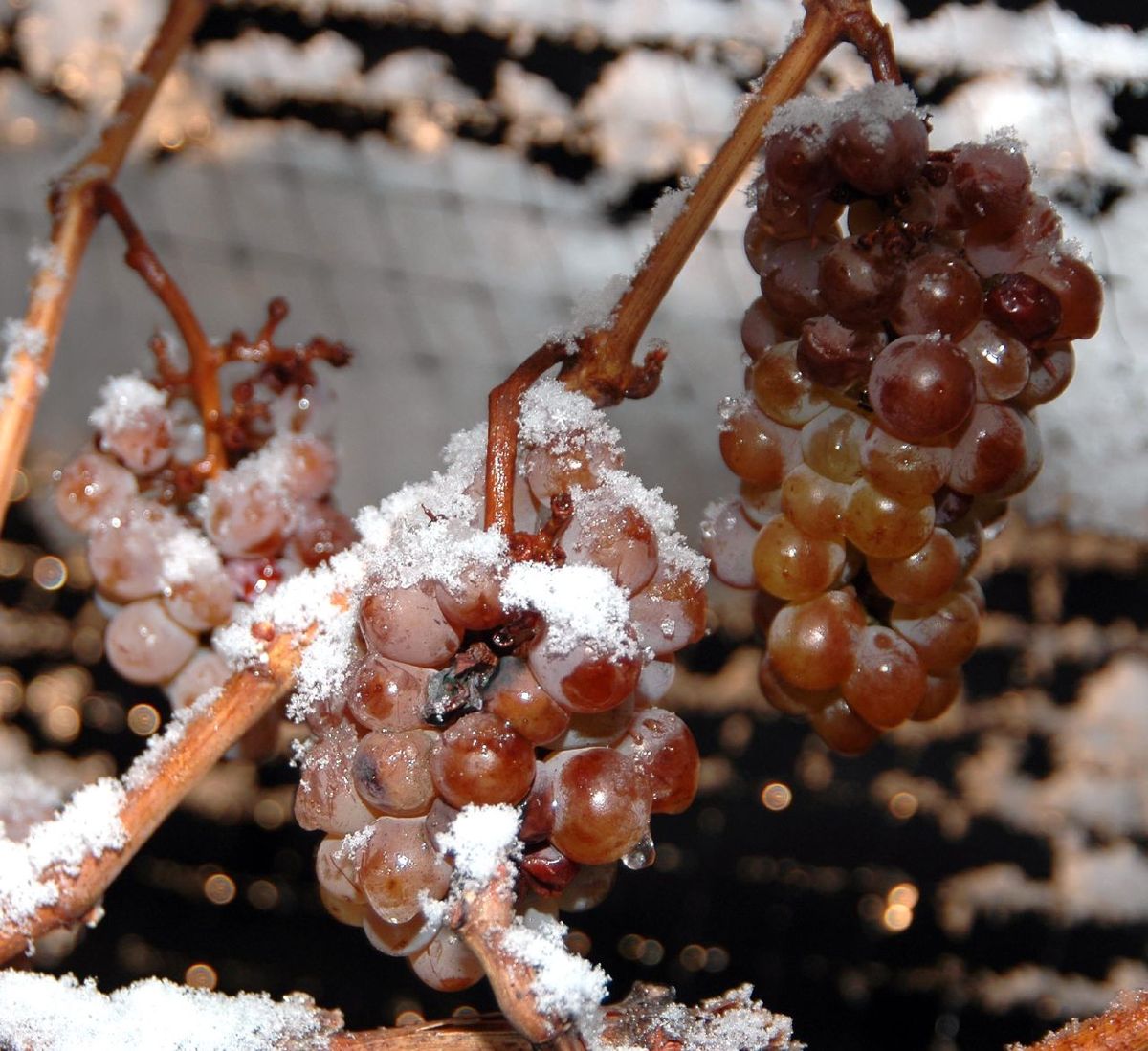The legend of Icewine can be traced back to its roots in the 18th century, when an unknown German wine producer wasn’t in his vineyard exactly at the grape-harvest time. When he came back to his chateau, he found out with sadness, that the grapes were already frozen. And, in December, he had to choose one of the two options: to lose all the material, or to try to winify the frozen grapes. The story continues, so, as you can see, he decided to try to use the frozen grapes and that was the first ever produced icewine.

Icewine is very exceptionally and rarely seen, as it is made out of frozen grapes in the middle of the winter season. The grape-harvesting is done only manually and by temperatures that don’t exceed 10-15 C. The most common white grapes used for Icewine are: Riesling, Gewurtztraminer and the French hybrid – Vidal-Blanc. Red grapes are also used, but rarely – Cabernet Franc and Cabernet Sauvignon. The thing that makes those kinds of grapes suitable for gaining a level of balance in those exceptionally sweet Icewines, is the high level of the acidity of the grapes. White Icewines are usually combined with the scent of apricot and peach. They are particularly famous for their density. Sometimes the taste of the white Icewine combined with peach or apricot, is just like honey. The red kings of grapes are usually combined with shades of strawberry or berries and are slightly piquant. The alcohol levels vary from 7-12%. And the tendency is that the Canadian Icewine’s alcohol level is usually higher than the German one’s.
After being harvested, the grapes are being pressed right away while they’re still frozen. The yield is small –you can hardly squeeze a single drop of highly concentrated juice out of a single grape. The juice then goes through the process of fermentation in a vessel, that was made out of oak wood and it stays there for months.
One could come to think that every kind of grapes is suitable for producing Icewine, but you’re not even close enough. The climate must be suitable – the winter should come early, so the grapes could freeze, not be attacked by birds or rotten on the vineyards. Too much snow is also a big threat to the grapes – the grapes that have grown on the lower part of the vineyard, are buried in snow. The happiest Icewine producers are those, who are able to say that they’ve harvested a great amount, which is half of the amount of the grapes in the vineyard.
The real Icewine must be made by some strict standards. For Germany, it is Qualitatswein. For Canada, this is VQA (Vinters Quality Alliance). The general rule is about the natural freezing of the grapes – you can’t just harvest the grapes earlier and put it in a giant fridge. The earliest harvesting time is the 15th of November. The sugar levels and the alcohol levels should be also natural, which means, that the sugar should be at least 125gr/l.
From everything that was mentioned above, we can only make a conclusion, that making Icewine is very risky, difficult and the produced wine is just a small amount. No wonder that the price of a bottle (0,375/0,500ml) of such an Icewine starts from 60-70 $. A leader on the market is Canada, followed by Germany and Austria.